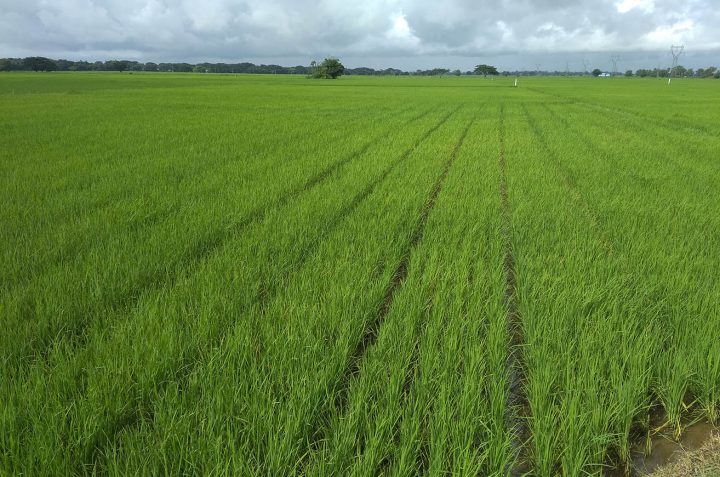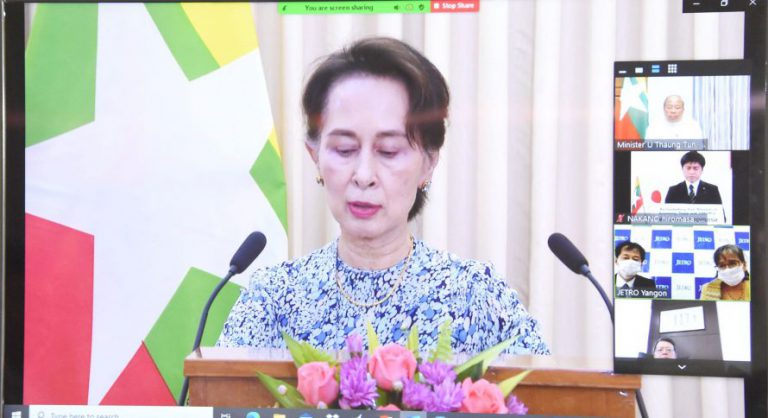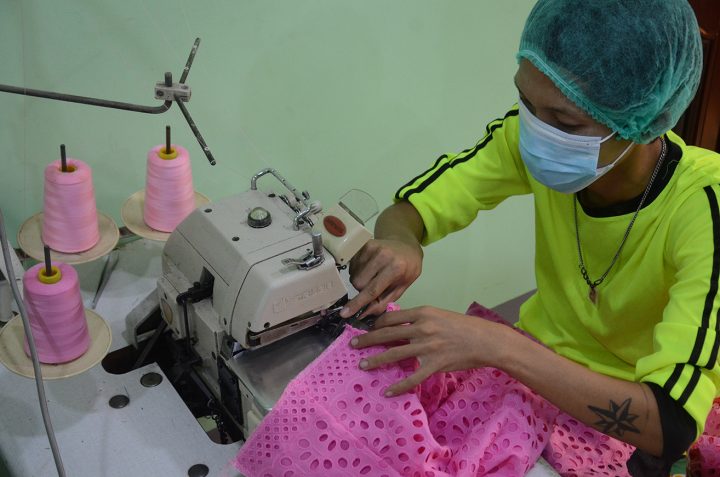![]() — Home — Business News
— Home — Business News
Weekly Business News from Myanmar
-

Myanmar has foreign assets of more than USD$ 5 billion in the ten months of current 2019 – 2020 financial year
Directorate of Investment and Company Administration (DICA) figures stated that Myanmar has concerned foreign asset of more than 5 billion United States dollars in 11 months of current 2019-20 financial year (FY) which will finish in September, MENAFN reported. As of October 1, 2019 to August 31 this year, the Myanmar Investment Commission (MIC) gave the advance to 228 foreign asset ventures. -

The value of Myanmar corn export to foreign countries reached USD$ 362.4 million in the ten months of current 2019 – 2020 fiscal year
Myanmar corn exports to foreign countries significantly soared to over 2.2 million tonnes, with an estimated value of US$362.4 million, in the ten months of the current financial year 2019-2020, according to the data released by the Ministry of Commerce. The export volume surged from $260 million, worth 1.4 million tonnes registered in the corresponding period of last FY. The sharp increase in export volume is attributed to the growing demand from Thailand this year. Earlier, China is the primary purchaser of Myanmar’s corn. China has suspended the importation of some agro products through the border gates including corn since 2017-2018FY. Besides, corn is not listed in China’s legitimate goods for border trade. Therefore, the ministry is making an effort to seek China’s AQSIQ registration and to reach an agreement with China for legal trade. -

More than 100,00o acres of monsoon paddy have been cultivated under the contract farming this year
More than 100,000 acres of monsoon paddy have been cultivated under the contract farming system this year, according to Myanmar Rice Federation (MRF). The affiliated companies of MRF have been coordinating contract farming project. The system was earlier intended to reach 200,000 acres in monsoon season. At present, 100,483 acres of monsoon paddy out of 200,000 have been cultivated by 53 companies under the contract farming system in 49 townships across the country, MRF stated. A total of 45,500 acres of monsoon paddy was earlier planned in Ayeyawady Region, but only 39,488 acres have been contracted. The system has already covered 49,402 out of earlier targeted 52,000 acres in Bago Region, 5,358 out of 21,000 acres in Yangon Region, 3,835 acres in 9,000 acres in Nay Pyi Taw and 400 out of 6,000 acres in Mandalay Region. -
Chinese companies are seeking the opportunities to invest in the southern Myanmar’s Industrial Complex Megaproject
Despite the surge in COVID-19 in Myanmar, Chinese companies including state-owned energy giants are seeking opportunities to invest in the Dawei Special Economic Zone (SEZ), a US$8-billion (10.4-trillion-kyat) strategic project in southern Myanmar’s Tanintharyi Region that is set to be Southeast Asia’s largest industrial complex. The Dawei SEZ management committee has invited international companies to invest in the full phase of the long-delayed Dawei project. Dr. Myint San, vice chair (2) of the committee, told The Irrawaddy, “Eight out of 10 proposals were from Chinese companies.” “Chinese companies are quite interested in the Dawei SEZ. Some are already planning feasibility studies for their proposed projects,” Dr. Myint San said. -

The value of Myanmar’s iron and steel imports valued over USD $ 1.047 billion in the ten months of current 2019 – 2020 fiscal year
The value of Myanmar’s iron and steel imports for the construction sector is valued over US$1.047 billion in ten months of the current financial year 2019-2020, according to the statistics of the Ministry of Commerce. Additionally, $495.29 million worth iron and steel products are also imported during October-July period. At present, Myanmar’s steel demand is estimated about 2.5 million tonnes per year, and 92 per cent of which are imported. The demand is likely to grow up to 5.4 million tonnes per year in 2030, according to the Myanmar Steel Association (MSA). “If Myanmar can fulfil the requirements of local steel consumption and focus on import substitution, the steel industry will strategically contribute to the national interest. Steel consumption includes in calculating economy growth index, MSA Chairman U Sit Taing Aung said. Eleven executive members of MSA established MSA Public Company Limited, and they are making efforts to set up iron and steel industrial zone, to reduce the outflow of US dollar, effectuating the development of steel industry and assisting in the country’s infrastructure building. Studies for implementation of iron and steel industrial zone project are underway in Ayeyawady and Taninthayi regions, and Rakhine and Mon states. The project is slated to commence within three to five year after completing studies, he continued. The government needs to support the steel sector by granting tax relief and land rights, controlling illegal import, making anti-dumping law come into effect and formulating steel policy, according to the MSA. -

Myanmar is doing well in backing country’s economy during the pandemic period
Daw Aung San Suu Kyi, the State Counsellor of Myanmar, said in her address to the country on September 25 that the country has managed to hold its economy from a downturn even though it is struggling due to the COVID-19. “Some of our people are concerned about the future in terms of economy and jobs. As I have said before, we have considered those factors. When looking at the number, the volume of investments until September this fiscal year has surpassed the previous fiscal year’s investment volume. What I want to highlight is that even though we are struggling with the COVID-19, we are doing well, to a certain extent, in managing the economy not to decline,” she said. According to data from the Ministry of Commerce, the volume of trade this year as of September is lower than that of the same period last year. However, she stressed that the country is in the position of reaching the trade volume of the previous year since there are three more months remaining until the end of the year. -

Myanmar external trade increased USD $ 1.96 billion as of 18 September 2020 in the current financial year when compared to the same period of period financial year
Myanmar external trade between 1 October and 18 September in the 2019-2020 financial year touched a high of US$35.6 billion, an increase of $1.96 billion compared with the corresponding period of the 2018-2019FY, according to the Ministry of Commerce. During the same period in the previous FY, trade stood at $33.7 billion, according to the data released by the ministry. Myanmar’s foreign trade has shown a 10-per-cent increase, year over year, under the incumbent government. Myanmar has already reached total trade value target of $34 billion for the current FY, said an official from the ministry. The Ministry of Commerce is endeavouring to boost export, enhance value-added production, reduce export barriers and provide trade financing services. In the current budget year, both maritime and border trade recorded an increase compared with the year-ago period, with exports estimated at over $17.08 billion and imports valued at $18.5 billion. Myanmar’s top export countries are China, Thailand, Japan, Singapore, the US, India, Germany, the Republic of Korea, Spain and the UK. In contrast, it primarily imports from China, Singapore, Thailand, Malaysia, Indonesia, India, Viet Nam, Japan, the Republic of Korea and the US, as per data of the Ministry of Commerce. -

Myanmar foreign trade in good shape due to strong demands for agricultural products
Despite the pandemic which has caused disturbances in trade flow, Myanmar foreign trade is in the good shape thanks to the healthy demands for agricultural products, according to the Ministry of Investments and Foreign Economic Relations. Myanmar started to feel the impact of the COVID-19 earlier this year with business suffering a severe blow. -

The value of Myanmar CMP garment exports worth USD $ 3.74 billion till the end of July in the current financial 2019 – 2020 year
Exports of garments manufactured under the cut-make-pack (CMP) system were valued US$3.74 billion in the period between 1 October and July-end in the current financial year 2019-2020, according to data from the Ministry of Commerce. Myanmar’s manufacturing sector is primarily concentrated in CMP garments and textiles, which contribute to the country’s GDP to some extent. The garment sector is among the prioritized sectors driving up exports. The CMP garment industry has emerged as a promising one, with preferential trade from Western countries. The majority of Myanmar’s garment factories operate under the CMP system, and those engaged in this industry are striving to transform CMP into the free-on-board (FoB) system, according to the Myanmar Garment Manufacturers Association. Following the negative impacts caused by the COVID-19 on the garment industry, some CMP garment factories have shut down on the reason for the lack of raw materials, leaving thousands of workers unemployed. -
All clothing factories forced to close in Ayeyarwaddy Region after COVID – 19 cases tested at the factories
Pathein, Ayeyarwady Region — Ayeyarwady Region’s COVID-19 committee has ordered all garment factories to close for two weeks after four employees tested positive for coronavirus at two factories in the regional capital. The two factories in Pathein Industrial Zone, one of which has around 700 employees and the other with over 2,000, were found to have four staff who tested positive earlier this week. The committee for prevention, control and treatment of COVID-19 led by the regional chief minister, U Hla Moe Aung, has now ordered that all clothing factories close until Oct. 7.
Business News
Copyright © 2014 Business Information Center All Rights Reserved.







